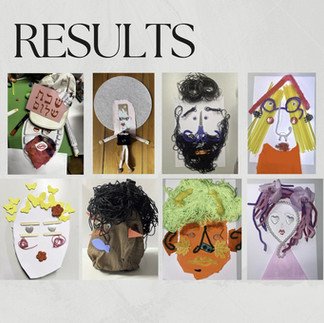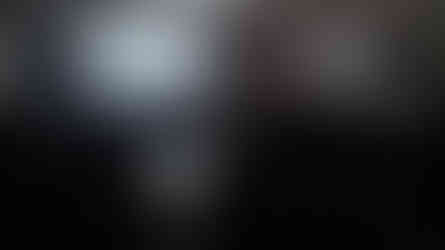MEMORY IN SCULPTURE
- abondardesign
- vor 1 Tag
- 3 Min. Lesezeit
Aktualisiert: vor 3 Stunden
On 20 October 2025, the Memory in Sculpture project was launched.
During the first session, participants got to know each other, learned about the project programme, created beautiful self-portraits using the technique of the famous Israeli portraitist Hanoch Piven, and learned about the origins of Jewish art. We looked into ancient history to find out what the sacred writings say about the origins of Jewish art. We explored the Ten Commandments, in particular the second commandment, ‘Thou shalt not make unto thee any graven image.’ We reviewed the Mishkan (the portable earthly dwelling of God used by the Israelites from the Exodus until the conquest of Canaan), the prescription for the creation of the Ark of the Covenant, learned who the first creator Bezalel was, and familiarised ourselves with archaeological finds related to Jewish heritage: excavations of ancient synagogues, the zodiac circle, the art of ancient Egypt, antiquity and their influence on Jewish art.
SECOND SESSION
The second session of the creative project Memory in Sculpture took place on October 27th.
During this meeting, we continued our exploration of the ancient history of Jewish art, learning about the archaeological excavations of the city of Zippori and its ancient synagogue, as well as the synagogue of Dura-Europos and its remarkable wall frescoes.
We then moved into the medieval period, where we studied masterpieces such as The Bird's Head Haggadah, The Michael Mahzor, The Tripartite Mahzor, and The Golden Haggadah, examining the profound symbolism and hidden messages preserved through the centuries within the pages of these illuminated manuscripts.
Afterward, we discussed the migration of Sephardic Jews to Western Europe from the territory of the former Jewish state, exploring their historical circumstances, cultural adaptation, and the transformations that followed the decline of Muslim influence in the region. We also examined the symbolism of the Sarajevo Haggadah — an illuminated manuscript that contains the traditional illustrated text of the Passover Haggadah accompanying the Passover Seder.
In the practical part of the workshop, we turned to the legacy of the world-renowned Israeli sculptor Dani Karavan, the creator of monumental works such as the Negev Monument, the Way of Human Rights (an open-air art installation in Nuremberg), and many other projects across Israel and around the world.
Inspired by Karavan’s artistic philosophy, we then explored the principles of abstract and geometric composition and created our own three-dimensional abstract sculptures using various sculptural materials.
THIRD SESSION
Our third meeting of the “Memory in Sculpture” series took us on a fascinating journey through Jewish symbols and the art of the Renaissance. We are gradually moving towards the end of the first stage of theoretical lectures, getting acquainted with the history
of Jewish art, Jewish artists and sculptors, and each other. In the third session, we learned about symbols, their meanings and the significance attributed to them by sacred writings and the Jewish people over the centuries. From the Star of David and the Menorah to paper-cutting, ketubot, and the painted wooden synagogues of Eastern Europe.
Together we discovered how familiar symbols — 🌿 the Seven Species, 🕯 the Menorah,
the Hamsa — appeared, transformed, and found their way into art across centuries.
We saw how Jewish artists in Italy reimagined Renaissance forms, how Torah crowns
and mantles turned into masterpieces of beauty (Hidur Mitzvah), and how folk art
in Shtetls preserved memory through wood, brass, and paper.
From the mosaics of ancient synagogues to the delicate Reyzel paper cuts and the vivid ceilings of Gwoździec, Jewish art revealed itself as a language of hidden meanings —
a way to tell stories through signs and ornaments, connecting the sacred and the everyday.
🕎 The key takeaway?
Jewish art is meant to be read — each line, fruit, and animal tells a story of faith, exile, and renewal.
Then we had the opportunity to discover Frank Meisler, a Jewish sculptor born in Danzig,

erected a series of Kindertransport memorials across Europe. By exploring his work, which includes a variety of miniatures, statues and amulets, participants had the opportunity to communicate with each other more deeply,

learn something new about each other and create amulets for each other from polymer clay, gaining experience working with a new material and practising the creation of small details in sculpture.
Stay tuned — next time we’ll move toward the 19th–20th centuries and see how modern Jewish sculptors and architects continued this dialogue between tradition and modernity. We also have work ahead of us on creating a large collaborative sculpture!








































Kommentare